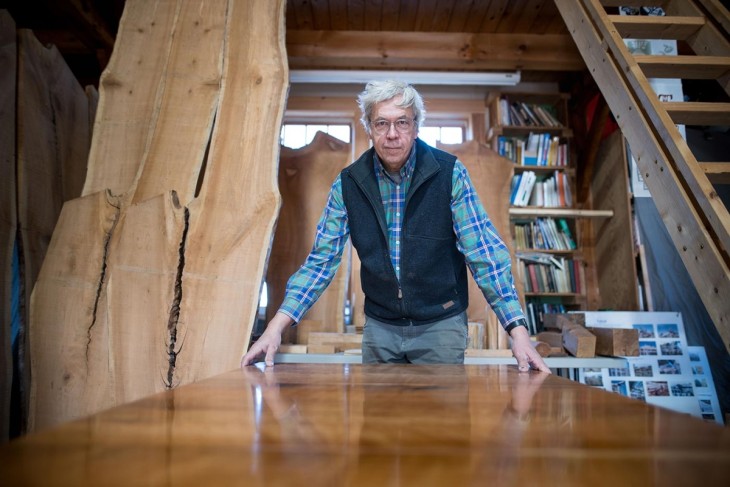
Paul Tuller has been working with wood since he was in the seventh grade. His long career includes time spent running a sawmill on his family’s farm in Connecticut and four decades as a carpenter and fine furniture maker in Dublin, New Hampshire. Well known for his Japanese-inspired woodworking, the craftsman often gets calls from people asking if he’s interested in fallen trees in their yards, or hazard trees that need to be taken down. But not all trees are fit for making furniture.
“I can’t tell you how many times people have told me they have a big tree, and it turns out it’s only good for one 2 x 4,” he said.
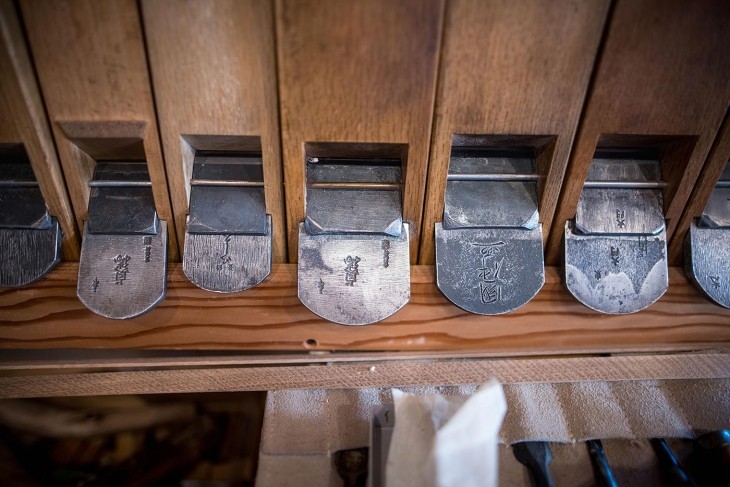
Tuller suspected that might be the case when homeowners from neighboring Peterborough reached out about a black cherry that had been damaged in the historic ice storm of 2008. The tree’s crown had cracked under the weight of the ice and fallen through the roof of the couple’s house, and they were anxious to remove the trunk and remaining branches. They initially planned to let their tree service take it for firewood, but decided to call Tuller first, just in case.
Despite his skepticism, Tuller went over to take a look. This time, it really was a big tree – approximately 60 feet tall and 30 inches in diameter, with the possibility of producing 25-inch-wide boards. He knew the tree presented an extraordinary opportunity. “It’s incredibly special to have all that wood from one tree, and at those widths,” he marveled. “Even 20-inch cherry planks are hard to come by.”
Tuller wasn’t sure what he would do with the wood, but he did know he couldn’t let it end up in a woodstove. The tree was so large that he had to hire a trailer to haul the logs and rent a portable mill to saw them into boards. In the end, it yielded approximately 30 planks, each 24 to 26 inches wide, 8 to 10 feet long, and weighing anywhere from 80 to 100 pounds.
Tuller planned to cure the planks in his barn for five years, but other work – including his general contracting business and the construction of a traditional Japanese timber frame house on his own land – took priority. For 15 years, he shuffled other projects around the cherry boards stored in his workshop as he pondered what to do with them. “I’ve moved those planks so many times, it’s unbelievable,” he said.
Eventually, Tuller used the very first board to make a custom, hand-planed step for his Japanese house, but he held on to the rest of the wood for something bigger – something that would, in his words, “show off the size of the planks and the uniqueness of the tree.”
In 2017, he retired from contracting work, and in 2019, he finished the interior of the Japanese house. Finally, he had time to contemplate the cherry.
In early 2023, Tuller embarked on the One Tree Project – an effort to make as many pieces of furniture as possible from the singular black cherry. His first piece was an extendable dining room table for his daughter, followed by a work table for an Afghani student who attends a local boarding school and spends her holiday breaks with Tuller and his wife, Mary Loftis. Next, he built a two-drawer desk for Loftis, complete with dovetail joints and secret compartments. Now he’s working on a headboard for a bed in his home and a sideboard cabinet for his son.
Tuller has designed each piece of furniture to showcase the natural color, shape, patterning, and impressive width of the wood. “Wood is beautiful on its own,” he said. “I try not to detract from that.”
At age 70, he is acutely aware of the physicality of working with wood. “I move each piece so many times,” he emphasized. After a lifetime of carpentry and a lengthy bout with Lyme disease, he now has joint damage and limited movement in his hands. “The One Tree Project holds more weight for me,” he said, “because it could be the last big furniture project I ever do.”
Tuller hasn’t ruled out the idea of offering a few pieces for sale or commission, but for now he’s focused on creating gifts for family and close friends. In many ways, it’s an act of legacy – his own, and that of the tree.
“I have always loved working with cherry,” Tuller commented. “It’s hard, but not too hard, and it has such a warm quality. If the tree had been an ash or an oak, I wouldn’t be doing this.”
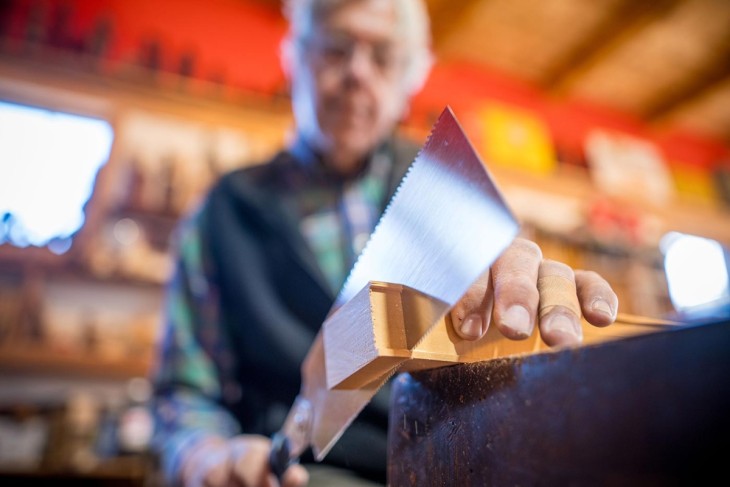
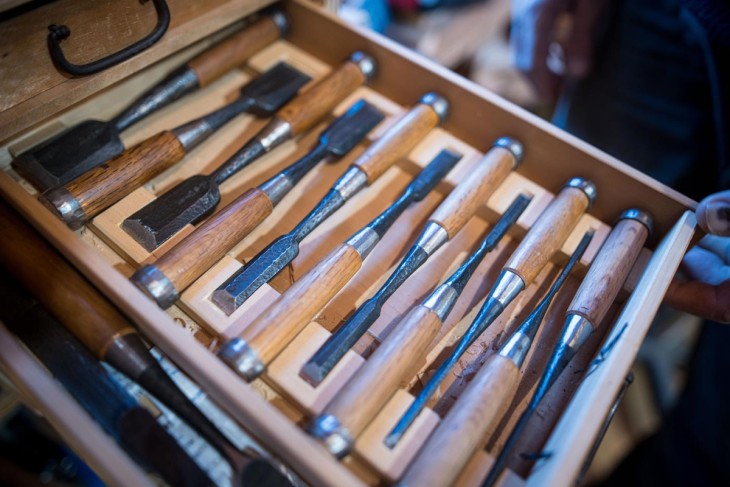
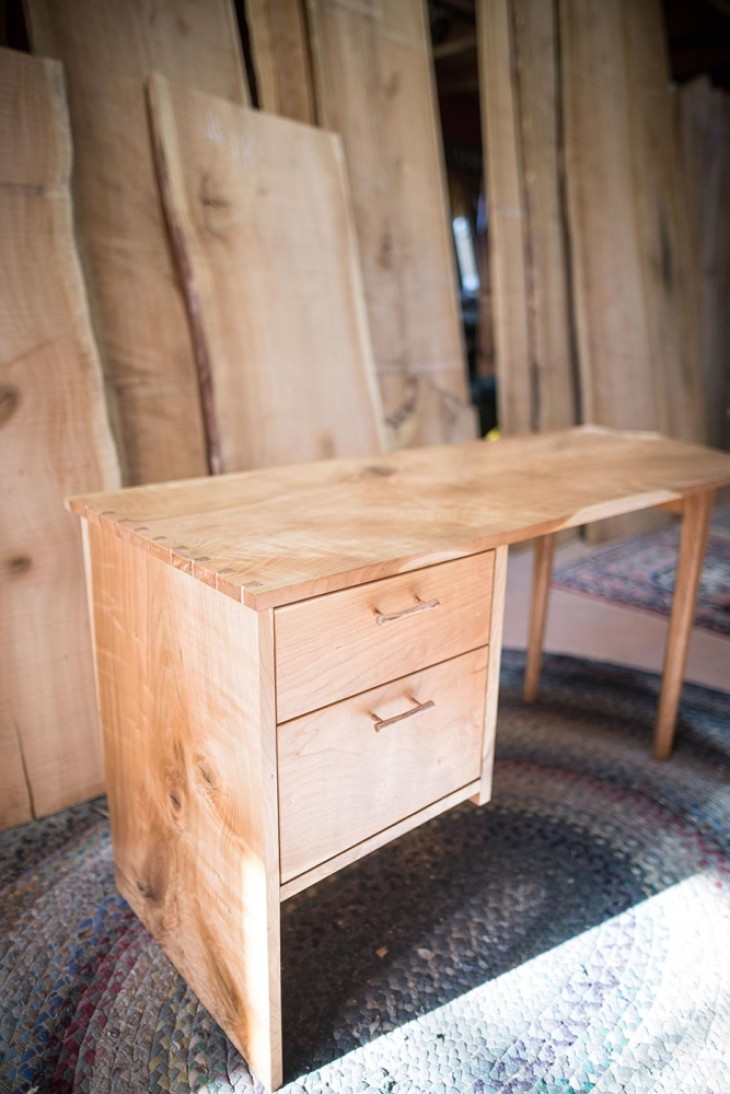


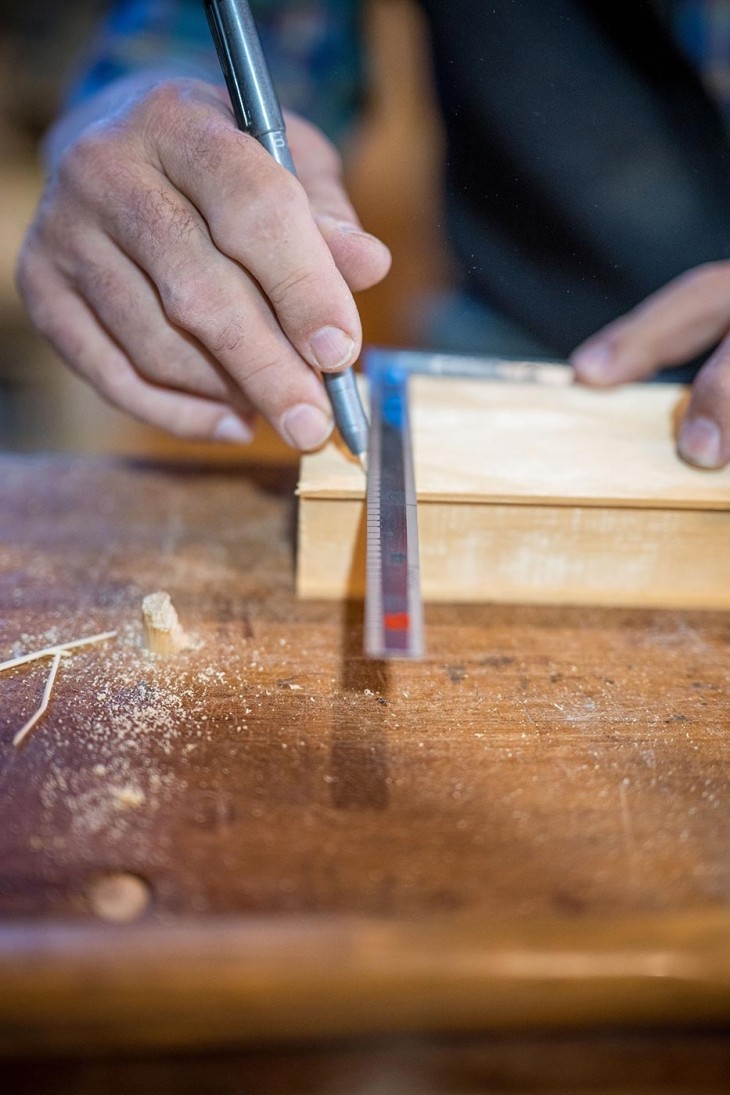
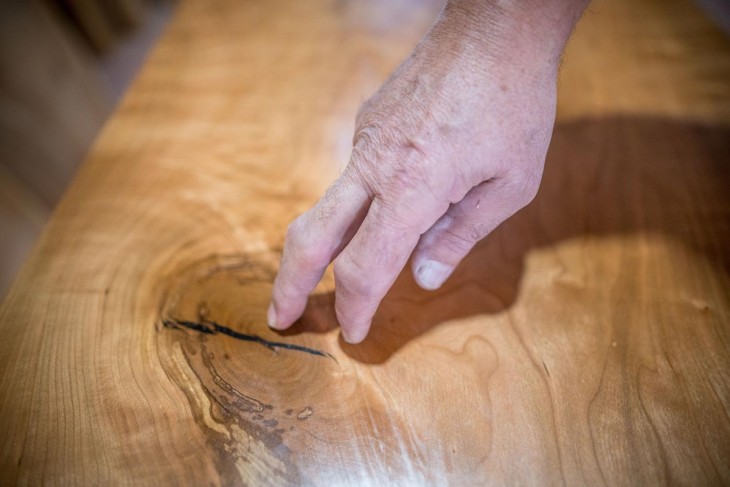
Discussion *